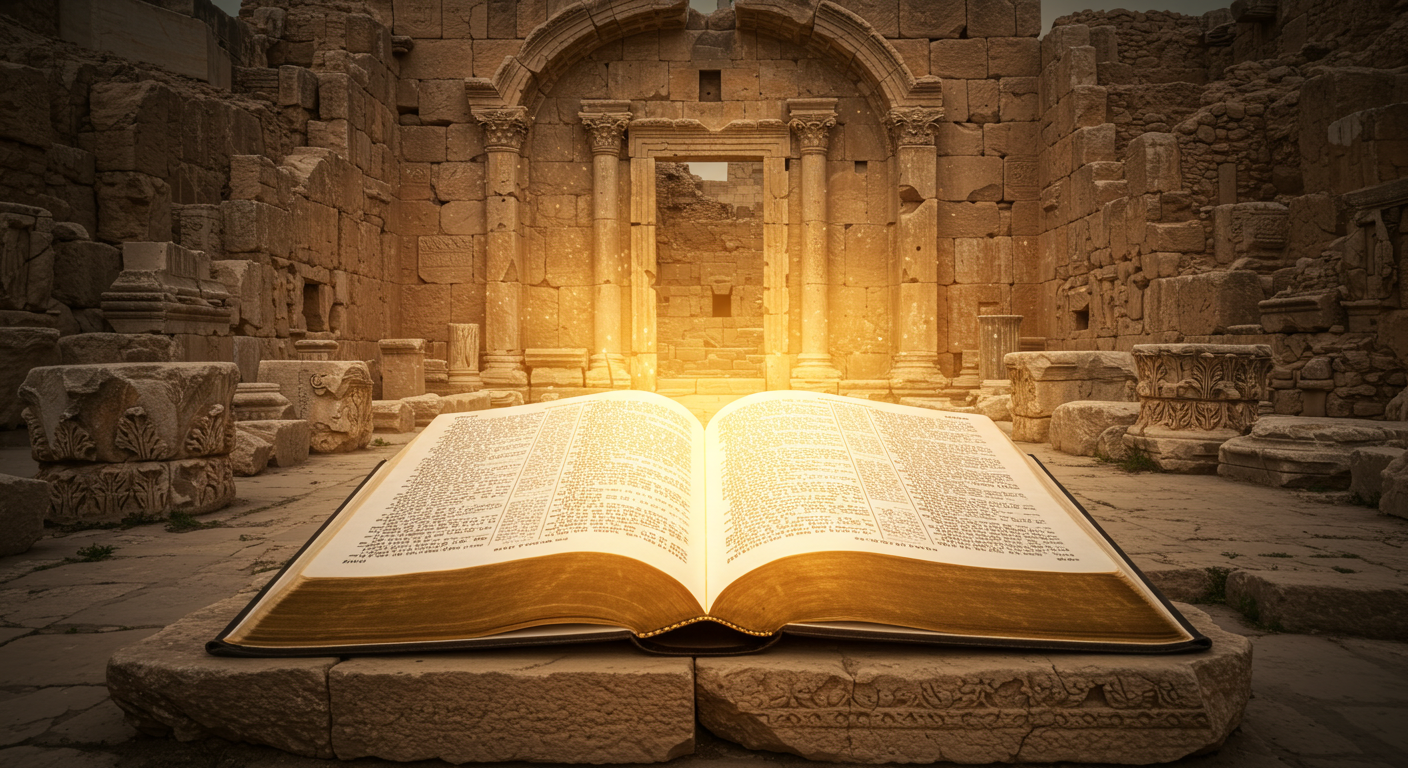Archaeological Proof That Confirms The Bible’s Accuracy
You may have asked yourself, as many have, whether the Bible is simply a collection of inspiring stories or a book anchored in historical reality. Archaeological evidence doesn’t answer every theological question, but it does shine a strong, steady light on the Bible’s historical claims. When you look at discoveries like the Dead Sea Scrolls, inscriptions naming biblical figures, and the ruins of cities mentioned in Scripture, you begin to see a pattern: archaeology and the Bible often point to the same past. This article explores key findings that make a compelling case for archaeological proof of the Bible and what that means for your faith.
Why archaeology matters to your faith
Archaeology gives you a tangible, physical context for the stories and events recorded in Scripture. When a ruin, an inscription, or an ancient scroll corroborates what a biblical writer said centuries ago, it strengthens the trust you can place in the Bible as a historical document. You’re not asked to substitute faith for evidence; rather, you’re invited to consider how archaeological proof of the Bible contributes to the Bible’s credibility. You’ll find the Bible is not a thin string of myths but a record often confirmed from the ground up.
The Dead Sea Scrolls: Words preserved across centuries
One of the most dramatic moments for archaeological proof of the Bible came in 1947 at Qumran, near the Dead Sea, when shepherds discovered scrolls that had been hidden in caves for almost two thousand years. The Dead Sea Scrolls include fragments of every Old Testament book (except Esther) and many other Jewish writings. What took scholars by surprise was how closely the scrolls match the later Masoretic Text and the Hebrew Bible that you may carry today. For example, the Great Isaiah Scroll (1QIsaª), dated to around the 2nd century BCE, contains the book of Isaiah nearly intact and matches the version used in modern Bibles, demonstrating the reliability of textual transmission.
You can look at passages like Isaiah 53 and see that the text read by Isaiah’s contemporaries and preserved in the scrolls is essentially the same as what you read in your Bible today, which strengthens the claim that God’s Word has been carefully preserved. Consider Isaiah’s prophecy in Scripture: Isaiah 53:5. The existence of the Dead Sea Scrolls is a powerful piece of archaeological proof of the Bible’s textual stability.
The Tel Dan Inscription: The “House of David” in stone
Not long ago, critics argued that King David might be a legendary figure created long after the events attributed to him. Then, in the 1990s, archaeologists working at Tel Dan in northern Israel unearthed an Aramaic inscription that mentions the “House of David.” This inscription dates to the 9th–8th centuries BCE and provides independent, non-biblical confirmation that a dynasty or clan traced to David was recognized by neighboring peoples. That fits squarely with the Bible’s presentation of David as the founder of a royal line.
The significance of this inscription is that it anchors David not just in story but in the memory and records of ancient Near Eastern writers. Passages that speak of David’s dynasty, such as God’s promise to David, become more historically buttressed when inscriptions like Tel Dan exist. See God’s covenant promise to David: 2 Samuel 7:12. The Tel Dan Inscription is a major instance of archaeological proof of the Bible that underscores Scripture’s historical reliability.
The Mesha Stele: Moab’s record of conflict with Israel
The Mesha Stele, discovered in Dhiban (ancient Dibon) in modern Jordan, is an inscription by King Mesha of Moab dating to the 9th century BCE. It boasts of Mesha’s victories and describes his conflicts with Israel. The stele even references the “House of Omri,” a term used by outsiders to describe the kingdom of Israel under Omri and his son Ahab. This dovetails with biblical narratives that describe Moabite-Israelite interactions, especially the episode in 2 Kings where Moab revolts against Israelite hegemony.
When you compare the Mesha Stele to passages in Scripture, such as the account of Mesha and Moab in 2 Kings 3:4, you see independent corroboration of geographical and political realities described in the Bible. The Mesha Stele is yet another example of archaeological proof of the Bible: it shows that the biblical writers were recording real conflicts between real polities.
The Cyrus Cylinder and Isaiah’s prophecy
The fall of Babylon to Cyrus the Persian in 539 BCE is one of the most momentous turning points recorded both in Scripture and in archaeology. The Cyrus Cylinder — an ancient clay cylinder discovered in Babylon and now housed in the British Museum — records how Cyrus allowed various displaced peoples to return to their homelands and rebuild their sanctuaries. This aligns remarkably with the biblical record that Cyrus issued a decree permitting the Jews to return to Jerusalem and rebuild the temple after the Babylonian exile.
Isaiah’s prophetic naming of Cyrus centuries earlier is one of the Bible’s bold claims. See the striking verse where God names Cyrus as His anointed: Isaiah 45:1. When you examine the Cyrus Cylinder alongside the biblical narrative, you find clear archaeological proof of the Bible in the sense that an external, contemporaneous record confirms a major biblical event: the policy of repatriation and temple restoration under Cyrus.
Hezekiah’s Tunnel and the Siloam Inscription: ancient engineering and biblical detail
You may walk the ancient streets of Jerusalem and feel the weight of history. Beneath the city, there is a remarkable engineering feat tied directly to a biblical king. Hezekiah, described in Scripture as a reforming king who prepared the city against imminent Assyrian attack, had a water system rerouted to protect Jerusalem’s supply. The Siloam Tunnel, a rock-cut tunnel leading to the Pool of Siloam, has an inscription carved into the tunnel wall describing how the workers met in the middle. Archaeologists date this to the late 8th century BCE — exactly the period of Hezekiah.
The Bible describes Hezekiah’s preparations against the Assyrians and his fortifications of Jerusalem in passages such as 2 Chronicles 32:2-4. The Siloam Inscription and the tunnel itself are tangible archaeological proof of the Bible: they match the biblical narrative’s timing and engineering details, showing that the writers were recording real events and responses to real threats.
The Pilate Stone: Pontius Pilate confirmed
When you read the Gospels, the name Pontius Pilate stands at one of the most pivotal moments in human history. For a long time, Pilate was known only from the New Testament, and some questioned his historicity. In 1961, an inscription was found on a limestone block at Caesarea Maritima mentioning Pontius Pilate, identified as a prefect (or governor). That stone, often called the Pilate Stone, confirms the existence and title of a man who plays a central role in the crucifixion narrative.
The New Testament repeatedly references Pilate’s role in Jesus’ trial, such as when he is brought before him: Matthew 27:2. The Pilate Stone is a concrete instance of archaeological proof of the Bible, affirming that the Greco-Roman political framework reflected in the Gospels corresponds to historical reality.
The Caiaphas ossuary: the high priest in a burial box
You may be surprised to learn that archaeology has even turned up remains linked to New Testament figures. Caiaphas, the high priest who played a central role in the trial of Jesus according to the Gospels, is mentioned in inscriptional and archaeological contexts. In the early 1990s, a burial ossuary surfaced inscribed with the name “Joseph son of Caiaphas,” consistent with the high priest described in Scripture. The ossuary and related finds date to the right period and region, confirming the existence of a high priest Caiaphas who would have been active in the first century CE.
The Gospels describe Caiaphas’s ecclesiastical role during Jesus’ trial in passages like John 18:13. Finds as the Caiaphas ossuary contribute to archaeological proof of the Bible by connecting archaeological artifacts to the people mentioned in biblical narratives.
The Pool of Siloam and the miracles of Jesus
Jesus’ earthly ministry took place in tangible places you can locate on a map. One such site is the Pool of Siloam, where Jesus sent the blind man to wash his eyes, according to the Gospel of John. Excavations in the early 2000s uncovered a pool that fits the biblical description, along with steps and pavement consistent with a first-century context. The pool matched the New Testament account both in location and function.
When you read the story of the blind man’s healing, you find the Gospel’s specificity: John 9:7. The rediscovery of the Pool of Siloam is an example of archaeological proof of the Bible at the level of everyday life and local geography — the Gospels recount what really happened in real places.
The Lachish reliefs and the Assyrian perspective
If you want a fuller picture of biblical events, you need to see both sides. The Assyrians left detailed records and artistic reliefs depicting campaigns in Judah, and among these are the famous Lachish reliefs taken from Sennacherib’s palace at Nineveh. These reliefs graphically portray the siege of Lachish, a city in Judah that is also mentioned in the Bible. The biblical account of Assyrian aggression against Judah and the sieges in Hezekiah’s day are given added weight when viewed beside Assyrian portrayals of the same campaigns.
The Bible itself records Assyrian pressure on Judah during Hezekiah’s reign and the siege of fortified cities in passages such as 2 Kings 18:13. When you compare the Assyrian reliefs with Scripture, you see independent, often detailed confirmation — an aspect of archaeological proof of the Bible that enriches your understanding of international politics in the ancient Near East.
The Black Obelisk and the tribute of Israel
Found in the mid-19th century, the Black Obelisk of Shalmaneser III depicts scenes of tribute being presented to the Assyrian king, including an Israelite king identified as Jehu or someone from his dynasty. The image and inscription align with the biblical narratives that describe the changing political relationships and tributary obligations among Israel, Aram, and Assyria. The obelisk provides a non-Israelite record that corresponds to Israel’s role in the regional power dynamics described in Scripture.
You can read about Jehu’s turbulent rise in the Bible and the wider turmoil in Israel during that period, such as in 2 Kings 9:24. Artifacts like the Black Obelisk are part of the mosaic of archaeological proof of the Bible: they show the Bible’s characters operating within the very world documented by neighboring empires.
The Babylonian Chronicles, Jehoiachin’s Ration Tablets, and the exile
The Babylonian conquest of Jerusalem and the exile of Judah are central events in Israel’s history and are vividly described in the Bible. Archaeology attests to these events through sources like the Babylonian Chronicles, which record campaigns and administrative affairs in Mesopotamia, and the ration tablets found in Babylon that mention Jehoiachin (Jehoiachin’s Rations Tablet), the deposed king of Judah, and record him receiving provisions in exile. These finds corroborate the narrative of deportation and captivity captured in biblical books like 2 Kings and Jeremiah.
When you read the account of Jerusalem’s fall and Jehoiachin’s removal, compare it with archaeology for an integrated view. See the sober description in 2 Kings 25:8-9. Such cross-confirmation is an important kind of archaeological proof of the Bible: it shows that the downfall recorded in Scripture corresponds to records and artifacts produced by the imperial powers of the day.

Cities and layers: Jericho, Hazor, and the archaeological method
Archaeology does not always produce a single inscription that proves a story. Often, it’s the careful excavation of cities layer by layer that helps you understand what happened and when. For example, sites like Jericho and Hazor have been the subject of long debates, revisions, and renewed excavations. While earlier simplistic claims were challenged, more sophisticated archaeological methods have shown occupational layers, destruction horizons, and other material clues that broadly match periods described in the biblical narrative, though interpretation requires caution and nuance.
Joshua’s conquest narratives are part of these discussions; as you read Joshua 6, you encounter powerful storytelling that archaeology may not verify in simple terms, but which does set events within a recognizable historical world. The way archaeology and biblical scholarship interact at sites like Jericho shows both the strengths and the proper limits of using archaeological proof of the Bible.
What archaeological proof of the Bible does — and doesn’t — do
You need to understand both the power and the limits of archaeological evidence. On the one hand, archaeology can corroborate people, places, customs, and events mentioned in Scripture; it can confirm names, dates, inscriptions, and sometimes even the contours of a narrative. On the other hand, archaeology rarely proves theological claims — such as the meaning of Jesus’ death and resurrection — in the way that faith does. Archaeology strengthens historical confidence in the Bible without replacing the need for spiritual conviction.
When you read passages like Acts 2:22-24, remember that archaeology enriches the backdrop of the story. It affirms that the people and places existed and that the narratives were set in a recognizable world. But faith in the gospel’s saving power rests on spiritual conviction confirmed by the Spirit, not merely by pottery shards or inscriptional fragments.
Common misunderstandings: “No evidence” or “proves everything”
You may have heard two mistaken claims: either that “there’s no archaeological evidence for the Bible” or that “archaeology proves every word of Scripture.” Both are extremes. The historical reliability of the Bible is supported in many ways by archaeology, but archaeological evidence must be interpreted carefully and in context. Some biblical events are supported by strong archaeological corroboration (names of kings, city destructions, decrees from foreign rulers), while other events are matters of faith and may not leave archaeological traces (or their traces may not survive). Your task is to weigh evidence honestly, not to force it into a preconception.
When you hold Scripture in one hand and pottery reports or inscriptions in the other, you’re practicing a balanced faith — one that values truth and appreciates how archaeology contributes to your confidence in the Bible.
How archaeological proof of the Bible affects your trust in Scripture
Archaeology’s testimonies — the Dead Sea Scrolls, the Tel Dan Inscription, the Cyrus Cylinder, the Pilate Stone, the Siloam Inscription, the Lachish reliefs, and more — help you see that Scripture is more than a pious imagination. These finds show that biblical narratives are woven into the tapestry of ancient Near Eastern history. That doesn’t eliminate the necessity of spiritual faith, but it gives you confidence that the Bible’s authors were recording real events and people.
Faith is not a flight from facts; it stands on them. When archaeological proof of the Bible aligns with Scripture’s accounts, your faith is not a blind leap — it’s a trust well-informed by historical reality.
Final reflections: the Bible and the witness of the earth
If you walk through the ruins of Jerusalem, stand before an inscribed stone, or read a scroll whose ink survived millennia, you feel the presence of history meeting faith. Archaeology will not answer every question you might have, but it repeatedly affirms that the Bible is grounded in the world of real kings, real cities, and real people. The finds we’ve discussed — the Dead Sea Scrolls, the Tel Dan Inscription, the Cyrus Cylinder, the Pilate Stone, the Siloam Inscription, and many others — are strong pieces of archaeological proof of the Bible’s historical claims.
As you read the Bible, let archaeology enhance your understanding, not replace your faith. Consider the Scriptures with both heart and mind. The earth bears witness to the Bible’s claims in many ways, and that witness is a gift that can deepen your trust in God’s Word.
Explore More
For further reading and encouragement, check out these posts:
👉 7 Bible Verses About Faith in Hard Times
👉 Job’s Faith: What We Can Learn From His Trials
👉 How To Trust God When Everything Falls Apart
👉 Why God Allows Suffering – A Biblical Perspective
👉 Faith Over Fear: How To Stand Strong In Uncertain Seasons
👉 How To Encourage Someone Struggling With Their Faith
👉 5 Prayers for Strength When You’re Feeling Weak

📘 Jesus and the Woman Caught in Adultery – Grace and Mercy Over Judgement
A powerful retelling of John 8:1-11. This book brings to life the depth of forgiveness, mercy, and God’s unwavering love.
👉 Check it now on Amazon
As a ClickBank & Amazon Affiliate, I earn from qualifying purchases.
Acknowledgment: All Bible verses referenced in this article were accessed via Bible Gateway (or Bible Hub).
“Want to explore more? Check out our latest post on Why Jesus? and discover the life-changing truth of the Gospel!”






